- About Us
- Columns
- Letters
- Cartoons
- The Udder Limits
- Archives
- Ezy Reading Archive
- 2024 Cud Archives
- 2023 Cud Archives
- 2022 Cud Archives
- 2021 Cud Archives
- 2020 Cud Archives
- 2015-2019
- 2010-2014
- 2004-2009
 |
Thumping Theories From New South Wales |
As March waned and daylight saving ended around Australia’s most populous state, people switched off their lights for Earth Hour and voters unequivocally removed the Labor Party from government. In a 93 seat lower house, the Legislative Assembly, Labor was reduced from holding a clear majority to having just 20 MLAs. The new Coalition Government has 69 MLAs. In the upper house, the Legislative Council, an election was held for half of the 42 MLCs. The Coalition secured 11 of the seats on offer, while Labor got just five.
The extent of the voters’ angry rejection of Labor means that the workers’ party, often considered to be the natural party of government in the state, will languish in opposition for at least eight years, probably twelve and possibly longer.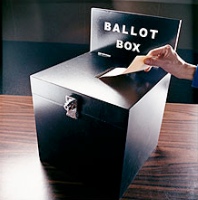 The state parliament has fixed four-year terms. The landslide to Barry O’Farrell’s Liberal Party and its rural based National Party coalition partners has given the conservatives a strong mandate and entrusted the new government to wield power almost unchecked by a parliamentary opposition. Clearly, outside observers must wonder how the state’s politics deteriorated to such an extent.
The state parliament has fixed four-year terms. The landslide to Barry O’Farrell’s Liberal Party and its rural based National Party coalition partners has given the conservatives a strong mandate and entrusted the new government to wield power almost unchecked by a parliamentary opposition. Clearly, outside observers must wonder how the state’s politics deteriorated to such an extent.
Numerous explanations have been offered for the election results. Some theories suggest that the Coalition won power, but most accept that Labor threw it away. All agree that the campaign made no difference to the outcome, but that voters’ minds were made up months before Election Day. Indeed, because of the size of the expected margin between the parties, opinion polls and surveys of voting intention were able to work with very approximate figures. A swing of around 15% was expected and eventuated. Some of the competing theories included the following.
1. Labor was in power too long
Labor came to office in 1995 when then opposition leader Bob Carr won a single seat majority (50 seats in an Assembly that then had 99 members). Carr repeated the win in 1999 in what some observers called a ‘Carr-slide’, and in 2003. In 1995, the Coalition in government was beset by allegations of corrupt behaviour and then in opposition by divisions over le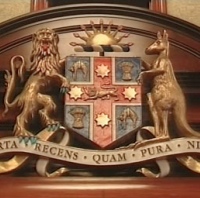 adership. When Carr retired his successor Morris Iemma surprised with a convincing win in the 2007 elections. One well-founded theory about elections in Australia generally is that voters tend to return governments for one term too many. Then they become angry when governments fail to meet their expectations. At the next election they express their frustrations and dismiss governments emphatically. Most new governments tend to have large majorities.
adership. When Carr retired his successor Morris Iemma surprised with a convincing win in the 2007 elections. One well-founded theory about elections in Australia generally is that voters tend to return governments for one term too many. Then they become angry when governments fail to meet their expectations. At the next election they express their frustrations and dismiss governments emphatically. Most new governments tend to have large majorities.
2. The federal adversarial theory
Most Australian parliaments are bicameral. Governments are formed in the lower houses. Some observers believe that voters prefer to install upper houses in which governments do not have clear majorities. So upper houses become genuine houses of review rather than mere rubber stamps for the executive. In Australia’s federal system, voters as a mass tend to take out some insurance by choosing adversarial governments at national and sub-national levels. There have been periods when the same party governed federally in Canberra and in the majority of states but generally the insurance policy finds local voters able to distinguish between state and federal issues. During the Coalition’s reign in Canberra from 1996 to 2007 for example, there were years in which Labor formed governments in every state and territory. In 1975, New South Wales voters swung away from the Whitlam Labor Government in Canberra but in 1976 installed Labor in Sydney’s Macquarie Street. The electoral pendulum swung a little slower in the 1980s. Labor returned to power in Canberra in 1983 and was evicted from Sydney in 1988. Labor returned to Sydney in 1995 and was thrown out of Canberra in 1996. Labor returned to power federally in 2007 but was routed in New South Wales in 2011.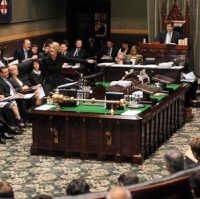
3. Labor mismanaged
Although Labor maintained the state’s financial rating the Coalition’s successful campaign slogan was to return New South Wales to ‘Number 1’, as the ‘Premier State’. Labor was criticised – justifiably - in many portfolio areas, especially planning, health, child welfare and urban transport. In successive budgets and election campaigns Labor seemed to be repeating promises and policy announcements. The O’Farrell Government has moved quickly for example, to address the lack of public transport to Sydney’s northwest.
4. Governments change when politicians appear corrupt and self-serving
Premier Carr ruled a well-disciplined Cabinet and parliamentary team. In Carr’s first term, just one Minister resigned over a breach of ethics. By comparison, the federal government at that time lost some half-dozen Ministers. When Carr departed, Labor appeared to collapse into a disparate group of self-serving opportunists. Iemma resigned after his party rejected his proposal to privatise electricity. His successor, Nathan Rees had a brief term. When Rees moved against factional power brokers who were undermining his authority, one Labor entity described him as ‘dead meat’. When Kristina Keneally succeeded Rees, media immediately accepted the Coalition line that she was a ‘puppet’ of the factional forces that had made the positions of Iemma and Rees untenable. Keneally attempted to appear as an ethical leader by acting against ministers and backbenchers who displayed lapses of integrity, but the sheer number of these incidents indicated that something was rotten in Labor ranks, and risked worsening the instability.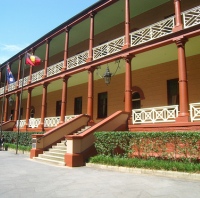
Planning and election funding were central to Labor’s problems. The government faced continual allegations that the biggest donors to Labor’s election funds were property developers who happened to receive favourable decisions about financially lucrative projects. A perception arose that any Minister who stood up to these developers was likely to be undermined by the developers’ ‘mates’ within the party. When the state’s anti-corruption body made an adverse finding against the MP from Penrith, a by-election became necessary. The massive swing against Labor probably went beyond disappointment with the MP’s apparent greed to express general disillusionment about Labor’s lack of dedication to public service.
5. Rats deserting a sinking ship
Very few of the MPs who had been elected or re-elected in 1995 faced the voters in 2011. This was true of both major parties, but the media emphasised the retirements among Labor MPs. There was a feeling, sometimes made explicit, that many MPs realised that they had no hope of re-election and so retired before the humiliating sacking occurred. Many Labor candidates were completely lacking in experience. Some were voting for the first time and one candidate was contesting a seat that the retiring Coalition MP had held since before the Labor candidate was born.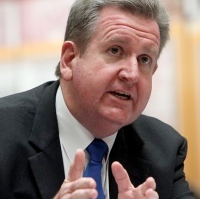 Some candidates were drafted into seats well away from their usual place of residence. Of course, all parties select ‘flag-wavers’ in unwinnable seats. Indeed, only 93 candidates of 494 who contested Assembly seats could have succeeded, and many candidates contested seats they could not win. The inexperience of many Labor candidates showed however, that the party expected to suffer a huge swing. More MPs re-contested seats where they had 2007 margins over the dreaded 15%. Interestingly, the history of elections in New South Wales suggests that governments last longer than the victorious leader who brought them out of opposition. Not since the turbulent 1930s has a winning opposition leader been defeated as premier. Only rarely is the change in personnel greeted favourably by the electorate. Usually, voters resent such changes as factional infighting or as signs that the government is losing its grip.
Some candidates were drafted into seats well away from their usual place of residence. Of course, all parties select ‘flag-wavers’ in unwinnable seats. Indeed, only 93 candidates of 494 who contested Assembly seats could have succeeded, and many candidates contested seats they could not win. The inexperience of many Labor candidates showed however, that the party expected to suffer a huge swing. More MPs re-contested seats where they had 2007 margins over the dreaded 15%. Interestingly, the history of elections in New South Wales suggests that governments last longer than the victorious leader who brought them out of opposition. Not since the turbulent 1930s has a winning opposition leader been defeated as premier. Only rarely is the change in personnel greeted favourably by the electorate. Usually, voters resent such changes as factional infighting or as signs that the government is losing its grip.
Whatever the explanation for the 2011 election result, it is clear that the dominant state branch of the Labor Party must engage in serious consideration of its shortcomings and undertake radical reforms. While the Coalition’s ravings about a popular revolt over the Gillard Government’s carbon tax legislation are not credible, there must be some implications for federal Labor in the New South Wales result. Even if aggregated voter behaviour is difficult to predict and explain, it is difficult to deny that hundreds of thousands of the people of New South Wales deserted Labor on polling day. Many formerly ‘rusted on’ voters might never again support Labor.
Tony Smith a former academic, contributed opinions about the elections both before and after polling day to Eureka Street, Inside Story, Online Opinion and 2SER-FM.
